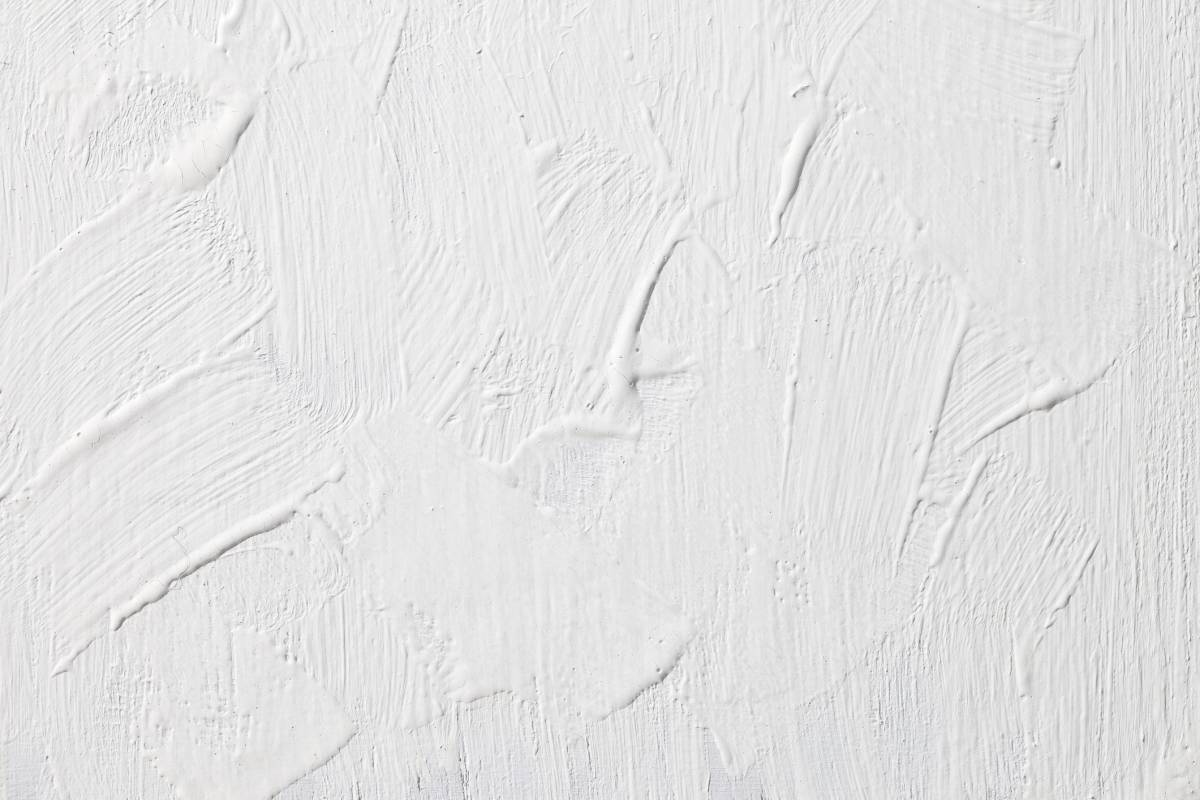
Find a local painter
- Inspiration /
- Indoor projects /
- Design & decor /
- Elevate your home with...
Elevate your home with these textured wall ideas
Add depth and character to your living space through different textured wall painting ideas.
Most walls are a blank canvas, often painted in solid colours. While this provides a clean slate for decorating, it might need more personality and depth your space deserves. Implementing textured walls is a simple yet effective way to add character and visual interest to your home.
With the help of this guide, learn the different interior wall texture paint ideas that can elevate your living spaces to new heights.
Why do people like textured walls?
Textured walls can breathe new life into a room, adding depth, character, and an element of intrigue that simple repainting often can’t achieve. It engages not just the eyes but also the sense of touch. Running your fingers over a textured wall adds a layer of connection to any living space.
One practical advantage of textured walls is how they can camouflage existing imperfections. Whether small cracks, uneven surfaces, or minor blemishes, textured finishes cleverly hide these flaws, offering a solution beyond visual appeal.
Unlike flat walls, textured paint for interior walls plays with light, depth, and shadow, introducing a dynamic interplay to any room. This dimensionality can make even small spaces feel more expansive and interesting.
When it comes to textured paints for walls, the options are as diverse as the design preferences they cater to. Textured wall examples include classic choices like stucco, Venetian, suede, concrete, stone-inspired, and geometric.
11 Textured wall designs and idea
1. Textured paint for your kitchen backsplash
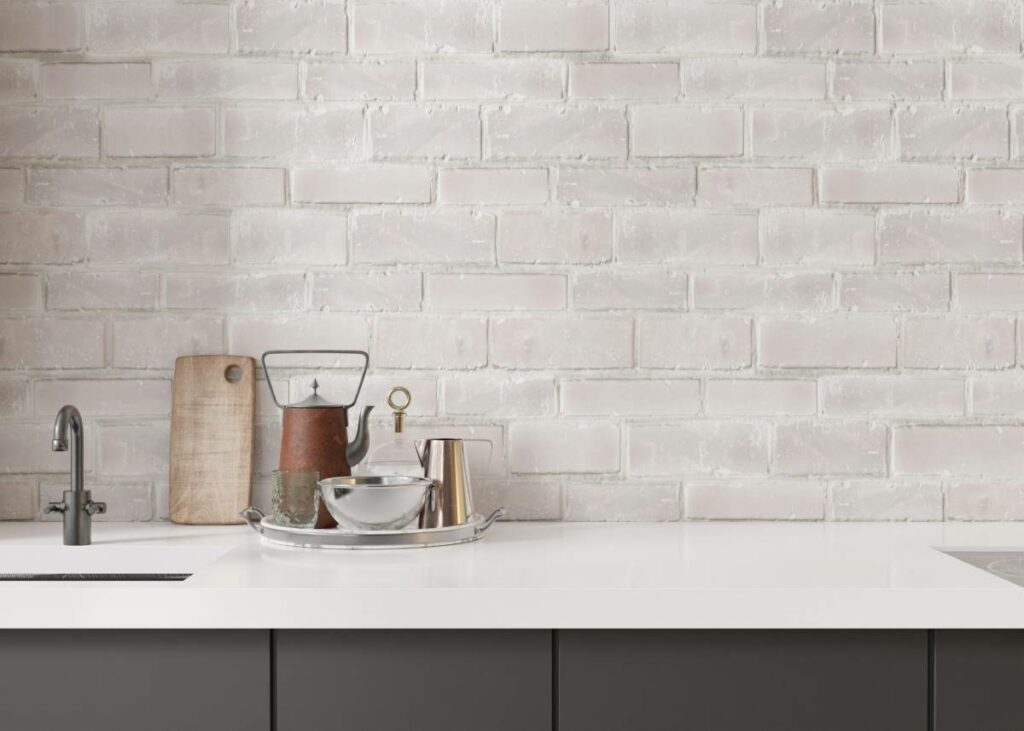
Revamping your kitchen backsplash with textured paint is a fantastic way to add character to this often-overlooked space. You can freely use contemporary or traditional designs for the flat surface or decide whether you want walls with elegant finishes or ones that encourage rustic charm.
With patterns like brick-inspired, herringbone, or stone-inspired textures, your kitchen backsplash can turn into a feature wall in the space. These textures add visual interest and create a tactile experience, turning a functional element into a statement piece.
2. Neutral wall for a chic look
If you still want to keep things simple, go for textured neutral walls. Be it soft whites, muted greys, or calming beiges, introduce a sense of subtle elegance to a room.
A great texture can be wave-like, as it can bring a sense of fluidity and movement to any room. This understated backdrop serves as a quiet yet powerful stage for other design elements to shine.
3. Brick walls for a more cosy vibe
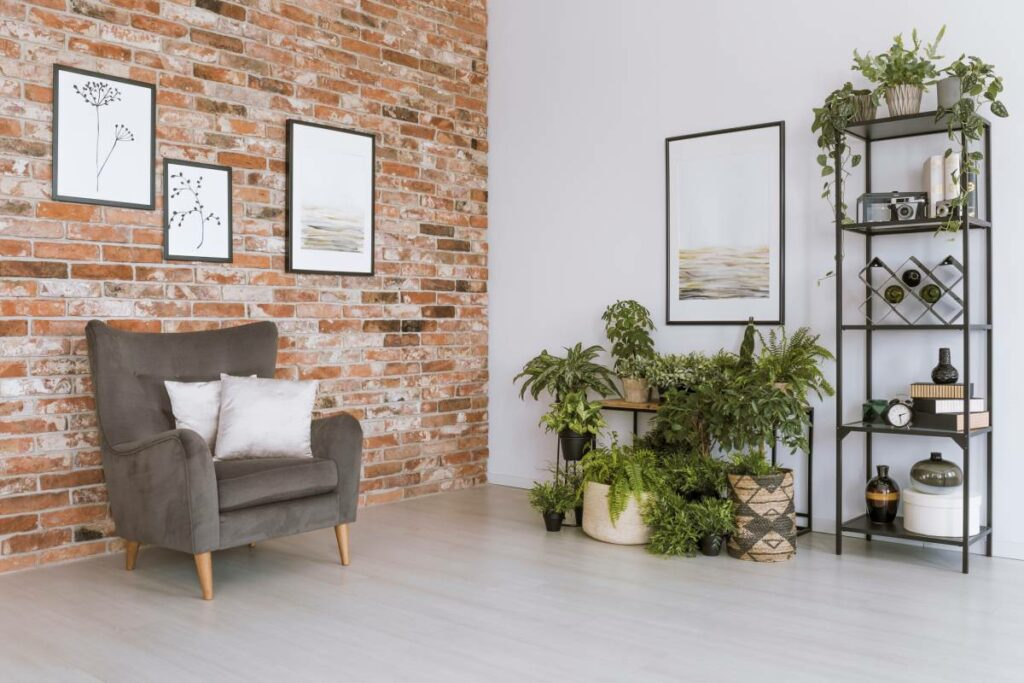
Integrating faux brick walls into your interior design fosters a warm and cosy ambience within your living spaces.
Whether you’re aiming for the charm of a rustic cottage or a trendy urban loft feel, faux brick walls bring unparalleled textural warmth. The three-dimensional appearance of the bricks, even if they are not genuine, adds character and creates a cosy atmosphere that instantly envelops you in comfort.
4. Settle with suede
Suede is a soft and velvety texture that piques the senses of sight and touch. The visual comfort of suede goes beyond its tactile appeal. The material’s inherent warmth adds a cosy feel to your living spaces.
While associated with luxury, suede remains a wonderfully subtle choice for any room in your home. It can be used for walls, furniture, accent pieces or accessories.
5. Subtle stucco for an elegant touch
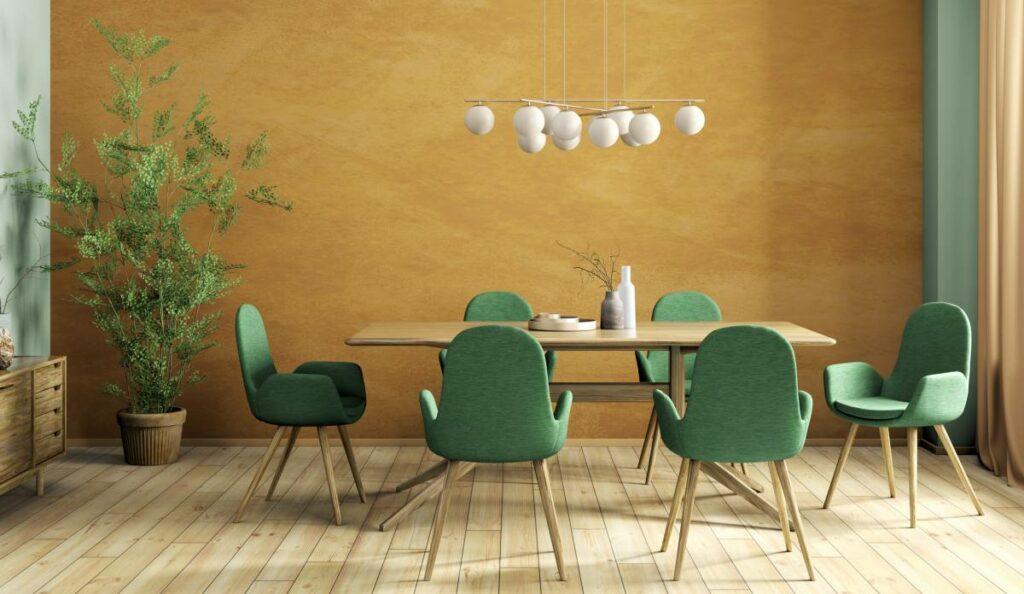
Subtle stucco introduces a textural refinement that captivates the senses with its delicate graininess. Often, you’ll find stucco to have neutral tones, making it an ideal and versatile canvas when upgrading your interior walls. The subdued hues, paired with the texture of stucco, create a backdrop that effortlessly blends with various styles and colour schemes.
6. Go for geometric textures
For a modern take on your home, try out geometric textured walls. The play of shapes and patterns creates a visual language that goes beyond traditional design. This style is particularly effective for a feature or accent wall.
This adds focal points to your home, as the play of different geometric shapes, patterns, and dimensions creates a dynamic aspect to your walls.
7. Natural with leaves
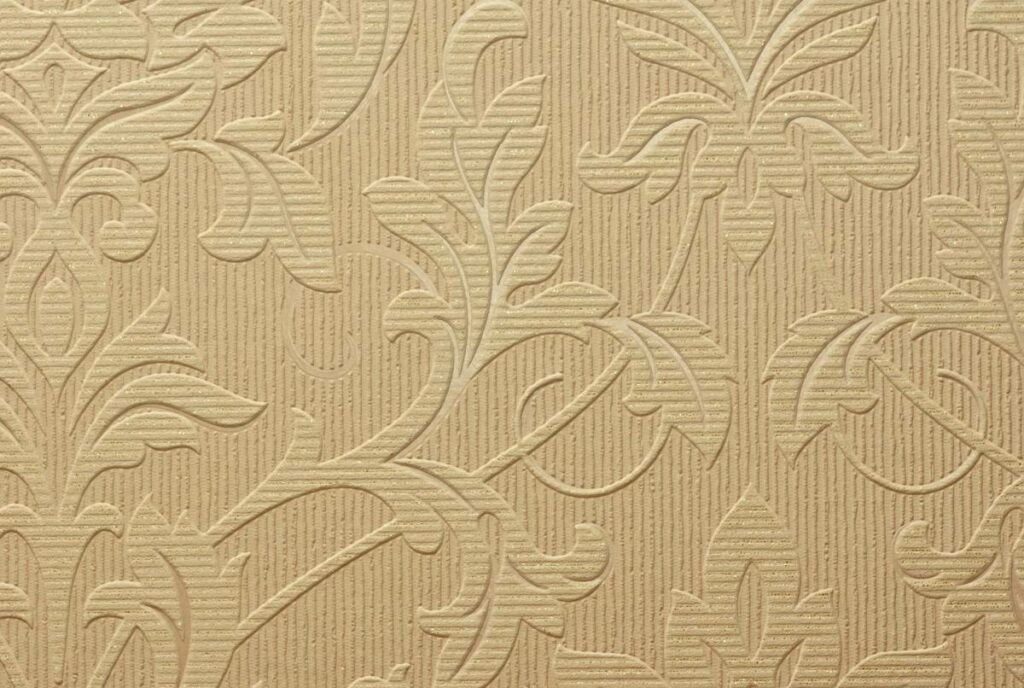
Using natural elements like leaves in your interior design journey can make your space more inviting, comforting, and naturally appealing. Leaves, with their intricate shapes and vibrant hues, introduce botanical aesthetics to your home.
Welcoming textured natural leaves into a wall can be done through various creative methods. One way is to use actual leaves for imprinting. You can apply paint or a thin layer of plaster to the wall and press real leaves or make leaf-like patterns on the surface using a sponge or other tools.
If you prefer a less messy approach, there are also wallpaper options with leaf patterns or even 3D wall panels that mimic the texture of leaves. Artificial leaves can be used for a more permanent and maintenance-free solution, allowing you to arrange them on the wall in artistic patterns.
8. Play with ombre
Although it may not be as flashy as the others, the ombre still evokes depth and dimension to a space. This technique involves gradual colour transitions, where one shade seamlessly blends into another.
By transforming blank walls into an ombre wall mural or accent wall, you get to present a stunning backdrop that can define the mood of a room. For better use of the technique, you can pair it with textiles and accent fabrics.
9. Dynamic swirls, comb, and spirals
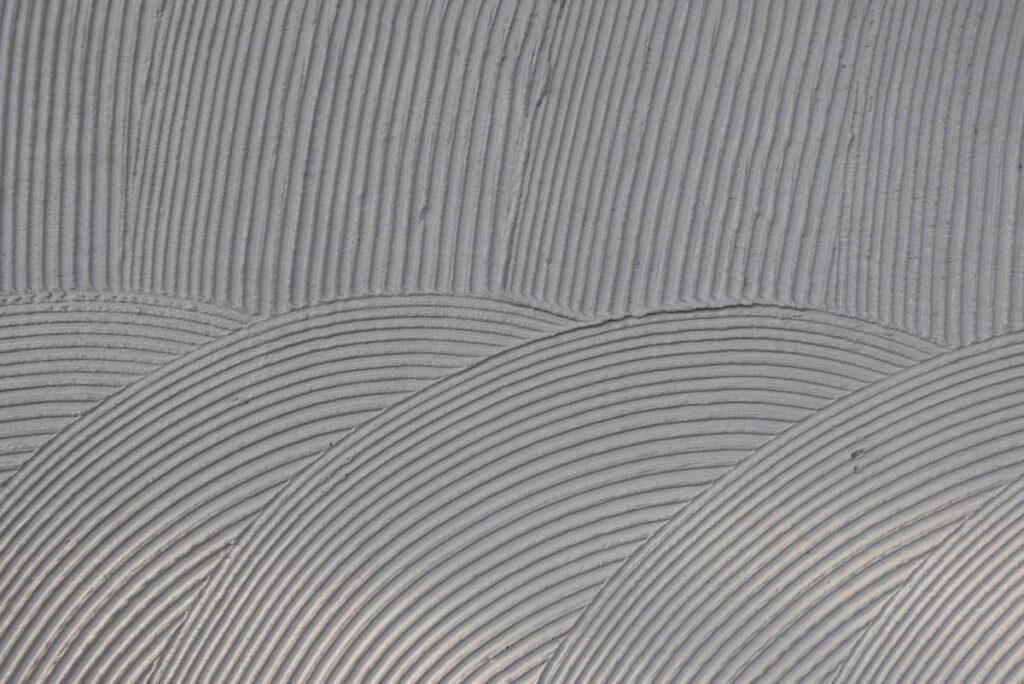
Dynamic swirls, combs, and spirals bring an artistic fluidity to your home, transforming static surfaces into visually engaging works of art. The graceful curves and twists create a sense of motion, infusing your living spaces with a dynamic and lively aesthetic.
Adding simple swirls and spirals to your walls can make your walls more admirable. This can easily be done using texture or stippling brushes on wet paint to create captivating swirl patterns. Experiment with the motion until you achieve the desired effect, maintaining consistency throughout the wall for a cohesive look.
The fun doesn’t just stop with your walls! You can extend this playful movement to other aspects of the room, including rugs, floors, or carpets, for a better atmosphere and vibe to the space.
10. Subtle linen
Elevate your space to new heights using linen as added texture for your walls. Incorporating linen into your walls adds a subtle but present elegance to your room, giving it a nuanced and sophisticated appeal.
Linen wallpapers are a popular choice to achieve the desired look, and they come in various patterns and colours, offering a range of options to suit your style.
For a DIY approach, installing linen fabric on your walls is also a viable option. Apply a wallpaper adhesive to the back of the linen and carefully position it on the wall. Smooth out any bubbles or wrinkles for a seamless finish. Keep in mind that this might require a bit more precision and effort, but the result can be truly unique.
11. Vintage with a distressed finish
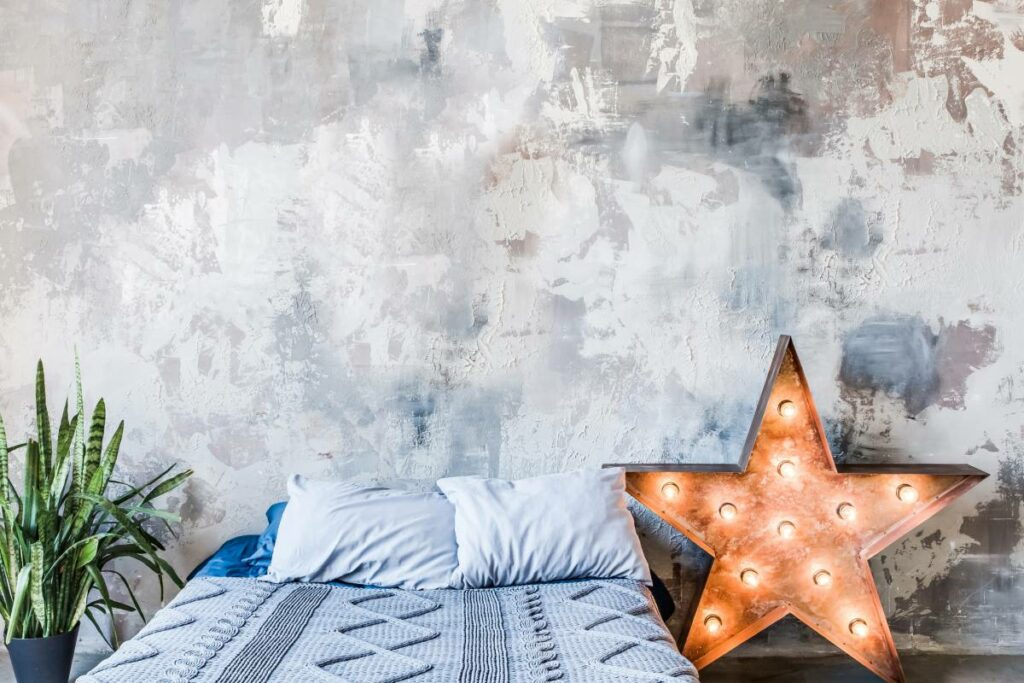
Bold and reminiscent of eras long passed, this gritty texture recreates the look of vintage walls that have weathered the passage of time, creating a tactile and visually captivating surface. The irregularities and imperfections contribute to a sense of authenticity and historical richness.
Tips when painting your walls
Choose the right texture
Before applying a fresh coat of paint, think about your walls’ existing state, texture, and condition. If they already have a textured finish, consider how the chosen paint technique will interact with and enhance this existing texture.
Some painting techniques work better with certain textures, so understanding this interaction is key to achieving the desired effect.
You should also thoroughly inspect your walls for damage, cracks, or imperfections. Addressing these issues before painting ensures a smooth and polished result. Fill in any holes or cracks with a suitable filler, and sand down rough spots to create a uniform surface.
Select the appropriate colours
Choosing the right colours is a pivotal step in textured wall painting, significantly influencing your space’s overall mood and aesthetic.
Take into account the existing colour scheme and decor elements within the room. Harmonising the paint colours with furniture, curtains, and accessories ensures a cohesive and unified look. Consider complementary colour schemes to create visual balance and enhance the overall design aesthetic.
Prepare your walls before painting
Before you dive into painting, your walls need to be paint-ready. Kick off by giving them a good clean to bid farewell to dust, dirt, and grease. Don’t forget to tick these things off your checklist:
- Carefully inspect the walls for any damage or holes.
- Repair any imperfections using a suitable filler or spackle.
- Sand down rough spots to create a smooth and even surface.
- Ensure that the repaired areas are fully dry before proceeding.
If there is old paint or wallpaper on the walls, consider removing it before painting. Use appropriate tools and methods to strip away old layers, ensuring a clean canvas for your new paint.
Consider room-specific requirements
Different rooms serve varied functions and have distinct atmospheres, so tailoring your approach to each space enhances the overall design and functionality. In high-traffic areas, for example, consider using durable and washable paints that can withstand daily wear and tear.
For instance, you can choose calming and soothing colours to promote relaxation if you’re working in a bedroom space. For kitchens, opt for washable and scrubbable finishes in areas prone to splashes and stains, such as behind the stove or sink.
Try to blend different textures for variety
Don’t be limited to a single texture when designing your space. Instead, experiment with blending different textures on the same wall or in different areas of the room. This creates a visually rich and dynamic environment, adding layers of interest.
Test small samples first
Before committing to a large area, test your chosen paint technique and colour on a small section of the wall. This lets you see how the texture interacts with the paint and ensures you’re happy with the final result.
How do I maintain my newly painted textured wall?
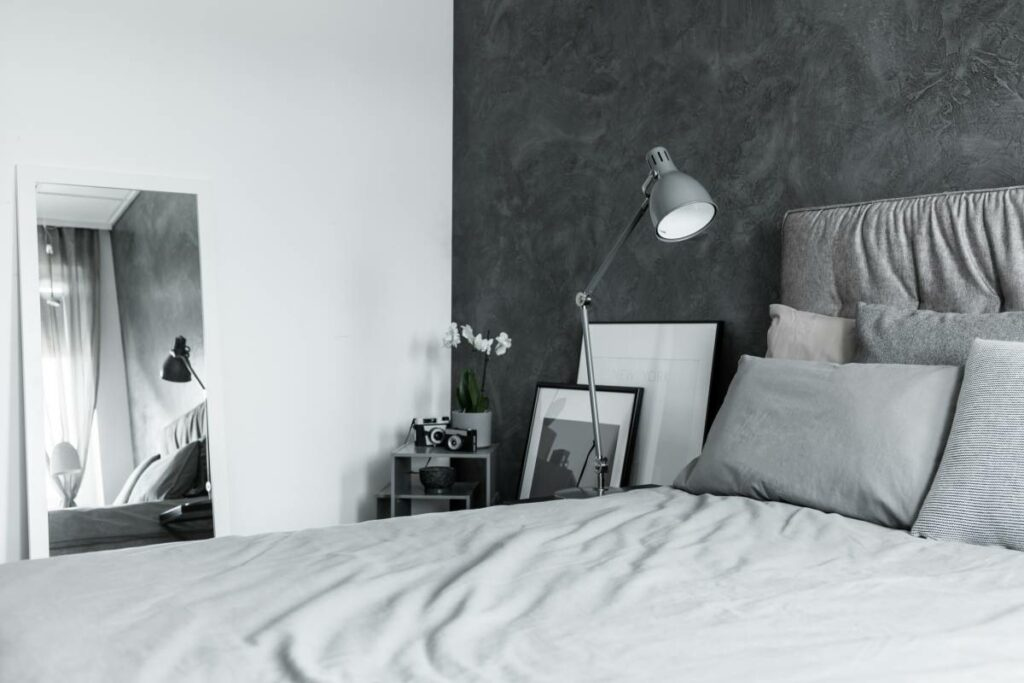
Maintaining the beauty of your newly painted textured walls involves regular cleaning, preventive measures, and addressing issues promptly.
Regular cleaning and dusting
Dust your textured walls regularly to prevent the accumulation of dirt and debris. Use a soft dusting brush or a dusting cloth to remove dust from the textured surfaces gently.
Use soft materials and avoid harsh cleaning products
Use a soft cloth or sponge for cleaning textured walls. Dampen the cloth or sponge with the cleaning solution and gently wipe the walls in a circular motion. Avoid excessive scrubbing, especially on delicate textures.
Likewise, don’t use harsh chemicals or abrasive cleaners, as they can damage the texture and finish. Opt for mild, soapy water or a gentle wall-cleaning solution.
Protect high-traffic areas
Consider using furniture or strategically placed decor to protect the walls in areas with high traffic or where the walls are more prone to stains. This can help minimise eventual wear and tear.
Consult with industry professionals
Expert painters can recommend cleaning techniques that are effective yet gentle on your textured walls. They understand the nuances of different textures and can guide you in maintaining cleanliness without causing damage.
Is it better to DIY or hire a professional painter?
For projects like this, homeowners are faced with the dilemma of hiring a professional to do the job or doing it themselves. While both options have their own pros and cons, the decision should ultimately depend on the homeowner’s skill, time, and the project’s complexity.
If you decide to do this yourself, expect lower upfront costs since you aren’t paying for professional labour. Additionally, you’re in complete control over the creative process, which lets you experiment with colours, textures, and techniques without hassle.
However, DIY projects can take longer, especially if you’re learning as you go. Time constraints might affect the overall project timeline. You’ll also need the right skills to achieve a professional-looking finish on textured walls.
On the other hand, by employing skilled painters, you can avoid common interior painting problems you’ll likely face when tackling the paint job yourself. These professionals bring expertise in dealing with different textures, ensuring a high-quality and polished finish. They also save you time and are more efficient in project management.
While they get the job done faster and more effectively, they might be more expensive since you’re paying for skills, experience, and assurance that you’ll have a top-notch finish.
Painting the perfect ending
Textured walls are a great way to breathe new life into your home’s walls. From subtle stucco elegance to bold herringbone patterns, these walls add depth, character, and a touch of luxury to your space. The versatility of textured wall painting allows for endless creativity, enabling you to personalise each room according to its purpose and aesthetic preferences.
If you doubt your capability to do your walls justice, always remember that help is within reach! Consider reaching out to a professional painter for a quick and easy transformation. Their expertise can turn your vision into a reality, ensuring that your walls receive the attention and skill they deserve.
FAQs on textured wall painting
Which texture paint is best for interior walls?
Choosing the best texture paint for interior walls depends on your preferences, the style of your home, and the atmosphere you want to create. Popular options include Venetian plaster, stucco, suede, and geometric.
Can texture paint be used on interior walls?
Absolutely! Texture paint is specifically designed on walls, providing an easy and effective way to add visual interest and depth to your interior spaces.
Is textured paint a good idea?
Yes, textured paint can be a great idea if you want to add visual interest, personality, character, or versatility to your space.
How much will your job cost?
The Oneflare Cost Guide Centre is your one-stop shop to help you set your budget; from smaller tasks to larger projects.



